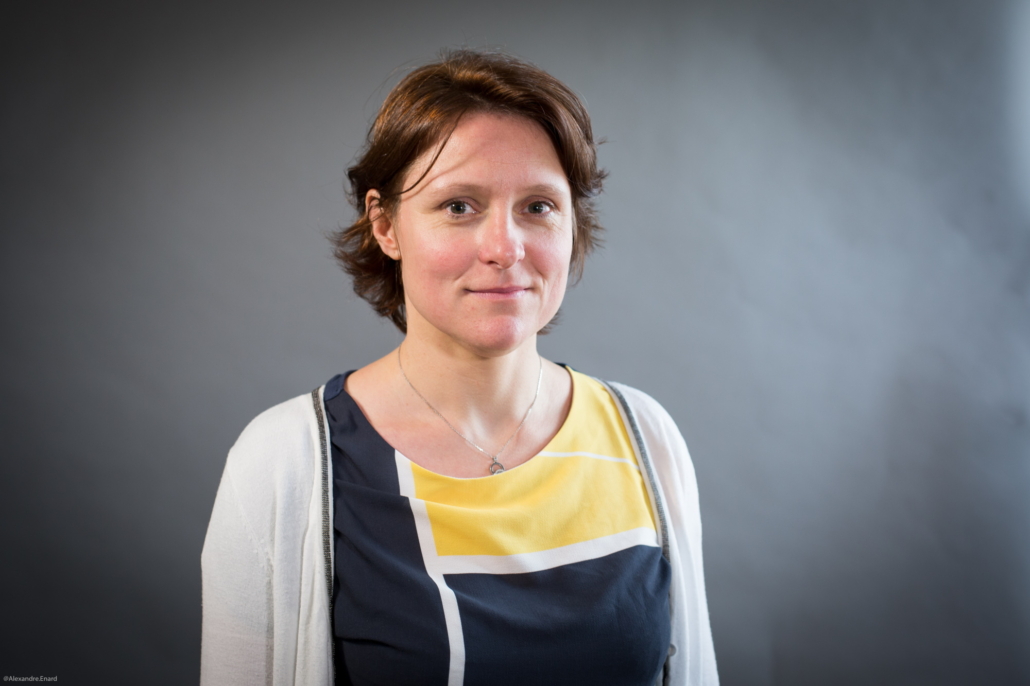“Information theory” provides a mathematical framework for understanding how to measure and optimize the transfer of information. Although developed by Claude Shannon in 1948, it has paved the way for a wide range of current research in a number of fields including telecommunications, data compression, cryptography, and machine learning. “The range of application is very extensive, so you can explore the subject and never get bored!” confirms Michèle Wigger enthusiastically.
Starting with her thesis, the Telecom Paris researcher made information theory her favorite research topic. After both her master’s thesis and doctoral thesis were awarded a medal at ETH Zurich, she went on to do a postdoctorate at the University of California at San Diego, before joining the Communications and Electronics department at Télécom Paris at the end of 2009.
Much of her work focuses on telecommunications, a sector that has evolved tremendously over the last few decades. “Today, ‘telecoms’ go beyond the simple transmission of data from one point to another. They serve very precise and varied purposes, and in order to increase their efficiency they must be adapted to these purposes. A typical goal, for example, is to coordinate autonomous vehicles so that they don’t crash. That’s why it’s now called ‘task-oriented’ or ‘goal-oriented communication’,” she explains. “This constant evolution in telecommunications is a real driver for me and for the projects I lead.”
Aiming for the optimum
In 2017, Michèle Wigger’s research on task-oriented communications was supported by a first European excellence grant (ERC Starting Grant, project title “Context- and Task-Oriented Communication”). The five-year project consisted in establishing the fundamental limits of different communication scenarios, for example systems with caches, i.e., user-side storage memories. The principle is to model a system mathematically and establish its limits, demonstrating both that they are achievable and that they cannot be exceeded. This could be the highest throughput, the largest compression rate, or the lowest probability of detection error.
In this first ERC project, the researcher and her team focused mainly on coding schemes. In general, they designed and put into practice new coding schemes, for various applications, which are capable of sending more information than traditional codes. The efficiency of these codes was verified by their implementation on a testbed. For some of these codes, they also derived theoretically, through mathematical proofs, the structure of optimal codes and their associated throughputs. “By identifying the optimum throughput, we want to check how close the improved codes we have developed are to the optimum,” explains the researcher.
For example, one line of research of this project involved distributed computing networks: systems in which data is distributed between several connected computers, enabling a calculation to be carried out more efficiently. However, these distributed calculations are subject to rigorous constraints in terms of power and energy, the computers must be able to communicate with each other in an energy-efficient way. Scientists at Telecom Paris have therefore looked at the limits of the different communication scenarios for these systems.
Demonstrating the very end
While Michèle Wigger strives to push her mathematical and theoretical research towards practical systems, she makes no secret of her preference. “For the first project, we went quite far with the implementation, but what interests me in the study of limits is really the fundamental aspect, the theorems, the proof techniques… For that, paper and a pencil are all you need,” she says with a smile.
At the end of 2023, she returned to her theoretical predilection and was awarded a second European grant (ERC Consolidator Grant) to explore the Fundamental Limits of Sensing Systems. The project – also over five years, starting in June 2024 – will focus primarily on mathematical proof techniques to demonstrate that for given systems it is not possible to exceed certain limits. This is a theoretical challenge because, as the researcher explains, “when analyzing a system, it’s easier to show that you can achieve a certain performance, – for example, a better throughput – than to show that you can’t go beyond a certain value. The latter requires higher levels of abstraction”.
Nevertheless, the proposed theoretical research also serves concrete practical frameworks. For example, the framework of integrated sensing and communication – better known by the acronym ISAC, which is predicted to be a major component in automotive vehicles or industrial robots. A relatively new proof technique, called “change of measure converse”, will be particularly explored by the researcher and her future team, as it is adapted to the analysis of these systems.



 What interests me in the study of limits is really the fundamental aspect.
What interests me in the study of limits is really the fundamental aspect.

